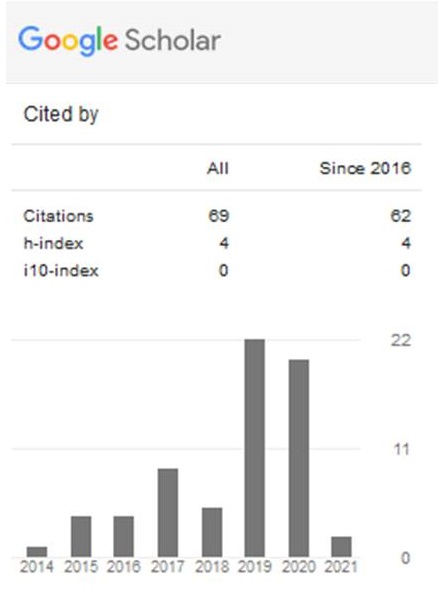Uji Ketebalan Pemberian Mulsa Daun Bambu Kering (Bambusa vulgaris Schrad.) terhadap Pertumbuhan Gulma
Abstract
This study was done from May to June 2014 in the garden of Experimental Biology Department of Biology, University of Riau. The objectives of this study were to determine the thickness of organic mulch of bamboo leaves with the most optimal in controlling the weeds and to determine the influence of the mulch thickness of dried bamboo leaf on the growth of weeds based on the leaf morphology. This study used a completely randomized design (CRD) with four treatments (without mulch (as control), 3 cm, 6 cm and 9 cm mulch thickness). Each treatments has five replications. The result showed that the thickness of bamboo leaf mulch gave significant effect on the number of weeds and the most effective much thickness in inhibiting the growth of weed was 9 cm (41 individuals).
Keywords
Full Text:
PDFReferences
Evan, J., and J.E. Thunbull. 2007. Plantation Forestry in the Tropics. The Role, Silviculture, and Use of Planted Forests for Industrial, Social, Environment, and Agroforestry Purposes. Third Edition. Oxford University Press, United Kingdom.
Doring T., U. Heimbach, T. Thieme, M. Finckch, and H. Saucke. 2006. Aspect of straw mulching in organic potatoes, effects on microclimate, Phytophtora infestans, and Rhizoctonia solani. Nachrichtenbl. Deut. Pflanzenschutzd. 58 (3):73-78.
Dwiyanti, S. 2005. Respon pengaturan ketebalan mulsa jerami padi dan jumlah pemberian air pada pertumbuhan dan hasil tanaman kacang hijau. Skripsi. Fakultas Pertanian. Universitas Brawijaya. Malang.
Fauzan, A. 2002. Pemanfaatan Mulsa Dalam Pertanian Berkelanjutan. Pertanian Organik. Malang.
Lakitan, B. 2004. Dasar-Dasar Fisiologi Tumbuhan. Radja Grafindo Persada, Jakarta.
Mahmood, M., K. Farroq, A. Hussain, and R. Sher. 2002. Effect of mulching on growth and yield of potato crop. Asian J. of Plant Sci. 1(2):122-133.
Mulyatri. 2003. Perananan Pengolahan Tanah dan Bahan Organik Terhadap Konservasi Tanah dan Air. Proseding Seminar Nasional. Hasil-Hasil Penelitian dan kajian Teknologi Spesifik Lokal. Hal. 90-95.
Noorhadi dan Sudadi. 2003. Kajian pemberian air dan mulsa terhadap iklim mikro pada tanaman cabai di tanah entisol. Jurnal Ilmu Tanah dan Lingkungan 4 (1): 41-49.
PPDP3H. 2012. Mulsa Daun Kering Pengendali Gulma Dan Penyubur Tanah Di Hutan Tanaman. Kementerian Kehutanan Badan Penelitian Dan Pengembangan Kehutanan.
Sebayang, H.T. 2004. Herbisida dan Pengendalian Gulma Tanaman. FP-UB
Setyorini, D. 2008. Pengaruh Umur Pindah Tanam dan Warna Mulsa Plastik Terhadap Pertumbuhan dan Hasil Tomat. http://erlanardianarismansyah.file swordpress.com!2009/ 12/3 7-ppopttomt.pdf. [20 Oktober 2014].
Solfiyeni, F. Safitri, dan Z. Syam. 2011. Uji mulsa Tithonia diversifolia A. Gray terhadap pertumbuhan gulma dan produksi tanaman tomat (Lycopersicum esculentum Mill). Prosiding Seminar Nasional Biologi Departemen Biologi FMIPA Universitas Sumatera Utara. Medan. Hlm 742-749.
Sukman, Y., dan Yakup. 2002. Gulma dan Teknik Pengendaliannya. Jakarta: PT Grafindo Persada.
Sutejo, M.M. 2002. Pupuk dan Cara Pemupukan. Rineka Cipta, Jakarta.
Wardjito. 2001. Pengaruh penggunaan mulsa terhadap pertumbuhan dan produksi zuchini (Curcubitae pepo L.). J. Hortikultura 14(11): 246-247.
Refbacks
- There are currently no refbacks.

_2017.jpg)



